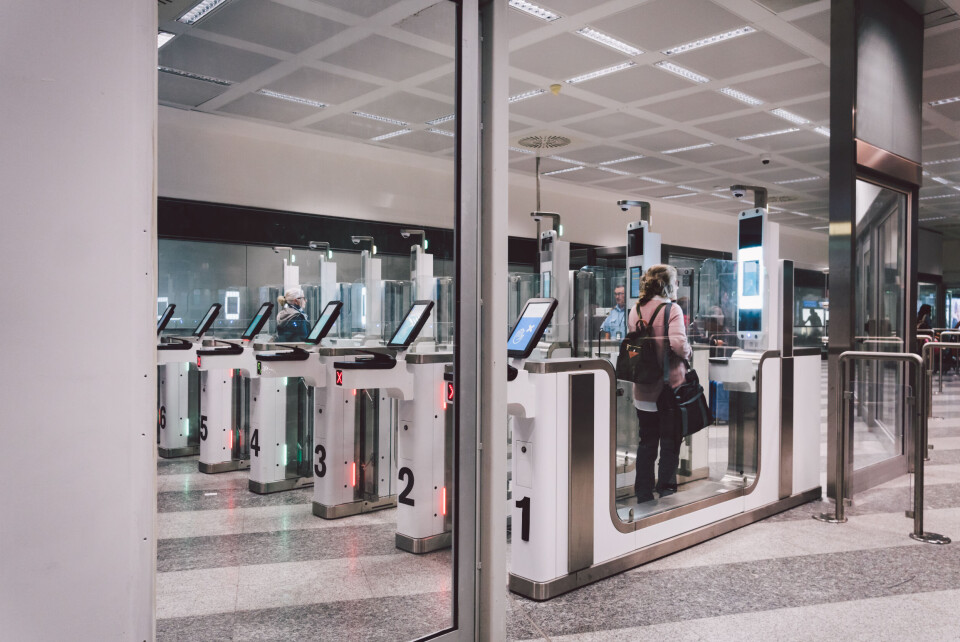-
Travellers returning to UK from France warned over taking sandwiches, dairy, and meat
Restrictions on food imports from earlier this year continue
-
Ferry prices: summer 2026 France-UK crossings
Find out which routes are cheapest and whether night or day travel is best
-
British and French travellers to be impacted by new ‘social media rules’ for US travel
American authorities will ask travellers to hand over social media information as part of application process to visit country
Can US and UK travellers use e-gates at French airports?
And what happens about getting a passport stamp or showing a French residency card?

France’s passport control e-gates, located in airports and international train stations, are not just open to EU citizens: they can also be accessed by people with biometric passports from a short list of other countries.
These are:
-
The US
-
Canada
-
Australia
-
New Zealand
-
Japan
-
South Korea
-
Singapore
-
Countries with a close relationship with the EU such as Switzerland, San Marino and EEA countries Liechtenstein, Norway and Iceland
UK citizens are also still entitled to use the machines post-Brexit.
In France, the e-gate system is called Passage automatisé rapide aux frontières extérieures (Parafe), and is used at international borders. It is normally quicker to use this system than to queue for.
Parafe gates are available in the following airports:
-
Paris-Charles de Gaulle
-
Paris-Orly
-
Basel Mulhouse Freiburg
-
Bordeaux
-
Lyon
-
Marseille
-
Nice
and the following stations:
-
Paris-Gare du Nord (Eurostar)
-
London-St Pancras (Eurostar)
-
Calais-Terminal de Coquelles (Eurotunnel)
-
Folkestone Terminal (Eurotunnel)
Adults can use the e-gates when arriving in and leaving the country.
Travellers who are entitled to use the digital system are not required to do so, and in some passport control areas, there will be no automatic gates available.
Different rules for children
Children under the age of 12 cannot use the Parafe gates, so they and their families will need to go to a manned desk.
In addition, although 12 to 17-year-olds can use the system, the French interior ministry states that they must be EU citizens.
Its list of accepted nationalities still includes the UK, as well as the countries with a close relationship with the EU listed above. However, it does not include teenagers from the US, Australia, New Zealand or the other countries whose adults may use the e-gates.
It should also be noted that teenagers may only use the system on arrival into France, because of rules on unaccompanied minors leaving the country.
Children aged over 12 who are eligible to opt for an e-gate do not have to do so, and can go to a manned desk if they wish.
How do I use the e-gates?
If using a Parafe gate, you should approach the passport booth, take off any glasses, scarves, hats or face masks, place your passport in the reader with the photo page facing down and wait for it to check your details.
The machine may need a couple of tries at reading your passport, but once this is done you will be told to look into the camera positioned at about eye level, so that facial recognition software can verify your identity.
An important point to bear in mind is that non-EU citizens who use these gates will then reach a border control desk to have their passports stamped and to record their entry and exit, to make sure that they do not overstay their 90-day visitor allowance.
Travellers who have residence permits can avoid having their passports stamped by showing their titres de séjour, the French border police told The Connexion.
Then you should be free to pass through to the baggage carousels and the exit.
Related articles
Explainer: France’s Brexit residency cards and foreign travel
Explainer: what is France’s ‘talent’ visa and who can get one?
Dover Port boss warns of safety issues and delays with new EU checks
























